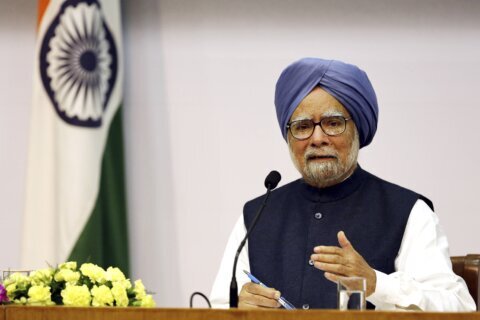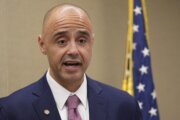Monitoring the vital signs of economic prosperity has been part of American culture since the 102 passengers of the Mayflower anchored in Plymouth, Massachusetts, in 1620. After surviving a winter that halved the population and a prolonged drought that nearly destroyed all their crops, the remaining settlers hosted a large feast on June 30, 1623, to punctuate a day of gratitude. This feast (their second, actually) was likely the precursor to Americans’ Thanksgiving holiday.
When it comes to reading vital investment signs, however, no feast or famine is required. The go-to source for many investors over the past seven decades has been the 10-year Treasury yield, and that yield has been rising since mid-September, from about 3.6% to 4.3% as of late November.
[Sign up for stock news with our Invested newsletter.]
Treasury investors “talk turkey” about how they feel about the U.S. economy via their daily trades; consequently, the inverted yield curve among 10-year and 2-year Treasurys has accurately foreshadowed almost every U.S. recession since 1955. When the yield from short-term Treasurys surpasses the yield from long-term Treasurys, it has historically been considered a bad omen for the economy (as of noon on Nov. 26, the 10-year Treasury yield was four basis points higher than the 2-year yield).
On the other hand, a substantial uptick in the 10-year Treasury yield indicates investors’ optimism about strong economic growth and possibly higher inflation, too.
Economic Policies’ Impact on Treasury Yields
In a speech in Dallas on Nov. 14, Federal Reserve Chair Jerome Powell commented on the prospects of economic growth and the central bank’s need to evaluate the pace and magnitude of rate cuts in the coming months. “The economy is not sending any signals that we need to be in a hurry to lower rates,” Powell says. “The strength we are currently seeing in the economy gives us the ability to approach our decisions carefully.”
As of Nov. 26, fed funds futures trading implied about a 56% probability of a quarter-point rate cut in December, according to the CME FedWatch tool. That’s down from nearly a 77% chance of a similar cut back on Oct. 18.
Economic policies can also have a tangential impact on Treasury yields. Significant increases in deficit spending often mean the federal government needs to sell more bonds to finance the national debt, which currently stands at over $36 trillion. This, in turn, puts the squeeze on private debt and raises all-around borrowing costs. That’s when Treasury investors begin to worry about how deficit spending and economic growth may spur inflation and influence Fed policy on rate cuts.
Does a Higher 10-Year Treasury Yield Mean Inflation Will Rise?
When the 10-year Treasury yield spiked to 4.479% immediately after the U.S. presidential election on Nov. 5, the 2025 outlook on inflation, economic growth and even Treasury yields remained stable. “Our base case is for a stable, steady-as-she goes environment for economic growth and inflation stabilizing around current levels over the coming six to 12 months,” said Julia Hermann, global market strategist for New York Life Investments.
Jeff Given, senior portfolio manager, co-head of U.S. core and core-plus fixed income for Manulife Investment Management, says, “While the rise in yields in October and November may be partially driven by higher inflation expectations going forward, there are other factors that may also be at play, including stronger economic growth prospects.” Given points to how a balanced economy, supported by controlled inflation and unemployment, may have reset investors’ expectations for aggressive rate cuts from the Fed in 2025. He adds, “While interest rate volatility has remained high, we expect it should decline over the next six to 12 months as markets get better clarity around regulation, as well as tariff and fiscal policy.”
The Federal Reserve Bank of New York Center for Microeconomic Data consumer survey in October revealed consumers expect inflation to hover at 2.9% in the next 12 months, followed by 2.5% in the next three years. Both estimates remain above the Fed’s preferred target inflation rate of 2%. And lest we forget, in his Dallas speech, Powell maintained that while inflation is transitioning closer to the central bank’s 2% target, “it is not there yet.”
What Treasury Inflation Breakeven Rates Are Telling Investors
The five- and 10-year Treasury inflation breakeven rates provide snapshots of potential inflation trends in the future. The breakeven rates can also help investors weigh whether Treasurys or Treasury inflation-protected securities may make sense for their portfolios, given the estimated direction of inflation over time. As of Nov. 25, the five- and 10-year inflation breakeven rates stood at 2.35% and 2.29%, respectively, according to data from the Federal Reserve Bank of St. Louis. These rates have declined slightly since mid-November.
Regardless, inflation may take a bite out of your Thanksgiving holiday budget again this year. But if the 10-year Treasury signals are on point, inflation may continue to wane in the coming year, a development investors would welcome with gratitude.
More from U.S. News
7 Best Treasury ETFs to Buy Now
Top 10 Dow Dividend Stocks to Buy Now
5 Best Nuclear Energy Stocks and ETFs to Buy Now
What the 10-Year Treasury Yield Says About Inflation originally appeared on usnews.com







